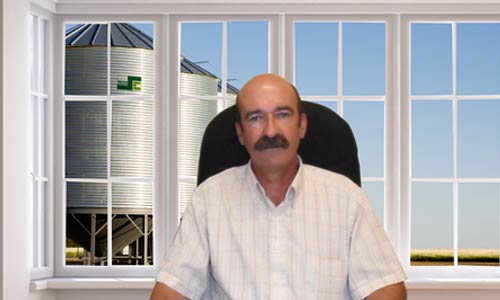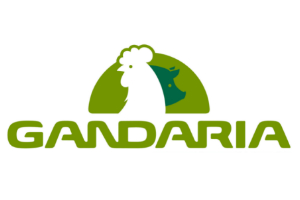Vicente García Peñas is a founding partner, joint administrator and general manager at Gandaria.
“We offer everything a poultry farmer might need from the maintenance, refurbishment or turnkey projects.”
How did you began at Gandaria?
I started as a commercial at Gandaria in Extremadura, after 4 years the sales level demanded more structure to meet the needs of the area and we decided to create a company with all services, this happened in 2001. Gandaria, being inside the Gandaria Group grew parallel to it, finally being the livestock division of the group worldwide.
In relation to the design and equipment of facilities what is ghe Gandaria offer?
We advise on the most suitable system according to geographical area and degree of knowledge of the poultry farmer, adapting to their needs in the event that he is an experienced farmer. We have our own brands but we can provide other equipment on request.
The facilities have evolved. What advantages does Gandaria offer the poultry farmer when hiring a facility with you?
Apart from a very good quality equipment in a well built facility, we give support from the beginning – supervision of the work to be done, including surveying, construction period is minimized with various specialized assembly equipment overlapping in the different phases and especially once it starts, during the first births we offer an advisory service with visits to the farm or remote in the case of remote control, if necessary.
Since signing a contract, how long does it take for a chicken or turkey facility to be ready?
It will depend on several factors: Works to be performed previously, weather, etc. Once started the construction period is between one and a half to two months according to dimensions, type of equipment, or weather factors.
“We are also conducting projects of laying houses for egg production in industrial system, range eggs, ecological and breeding”
What is the payback period of a chicken / turkey and a broiler facility?
This is always relative, many factors such as size, impact of soil, complementary services: electricity, water, access, etc…. Growers must make their repayment plan depending on the total costs and their estimated income. For them, the main factor is the efficient management and appropriate facilities. Often, they reduce the investment, what makes this period substantially longer.
We offer everything needed for the development of the activity in the poultry sector: turnkey warehouses, services, equipment…
How thick, what insulating capacity and what features has a typical Gandaria poultry house sandwich panel?
Depending on the geographical area a different type of insulation is installed, often the client determines the insulation as it considers appropriate or because of warehouses already built in the área. We are currently installing several facilities, some are pural sheet, others are sandwich-sandwich, while others are sandwich-pural. We always assemble quality brands with necessary isolation coefficients and of course, with sheet from 0.5 to 0,4 minimum. We always do quality control to our suppliers and advise to do so to the engineering or to whom performs the construction management. Farmers must be carefull with this type of product, since there are differences in budgets, with the corresponding lack of insulation or consistency of sheet.
In Spain is increasingly customary the “turnkey facility” among our customers, over 90% of them demand these type of project.
Where do thermal bridges occur in the construction of a facility and how is it solved?
In a facility conveniently built thermal bridges should occur only in unavoidable areas as may be fans. For the rest, we use PVC lampshades, polyurethane sealing gaps, health profiles in the walls joints, ceiling and false ceiling, isolated air entries, etc..
Can you indicate what type of ventilation is more common in chicken houses? Does it depend on the area of Spain? How does it works in each area?
Indeed, it depends on the area and as I said earlier, the demand of the grower is sometimes due to something that he has previously viewed or because they know better a particular system. But this should not influence the choice. Geographic location and other parameters are much more important criteria.
What areas of Spain are currently active in the installation of new poultry houses?
In general there is some activity in almost all the national territory but Gandaria demands and projects in progress are mostly from Castilla la Mancha, Castilla León, Extremadura, Andalucia, Aragon, Navarra and Valencia.
How many facilities are being built per year and for what species?
Around 20-25 chicken houses in Spain in 2014 and about 30-40 in other parts of the world. In terms of hens, around 3 facilities for ecological hens in Spain and 8 of broilers in the rest of the world.
Gandaria is currently growing outside Spain. In how many countries are you present?
We are currently in 24 countries, 12 with established distributors and the rest according to project sales. Because of the marketing and trade fairs we attend, we can increase our international presence during 2014 to 6-8 other countries.
What are the Gandaria short-medium term plans?
To consolidate in the areas of Spain where we do not have a desired implementation and to expand the international market. For the latter, the sales team has recently hired a person and we are promoting the training of the staff we already have in different delegations of the Gandaria Group: Argentina, Colombia, Bolivia, Uruguay, Kazakhstan, Tunisia, Romania, Iran and India.
Do you think the Spanish livestock is competitive in the national and international market? How do you rate the livestock from countries where the group has made exports?
I think it’s an obvious fact that Spanish livestock is competitive, but it can be improved and we should start from that premise to be well positioned in the different markets. As for livestock in other countries where we operate, we are noticing a substantial improvement and even well-defined and structured projects, enough to think that they will be very competitive if they follow the pace of investments made.
Source: Agrinews





